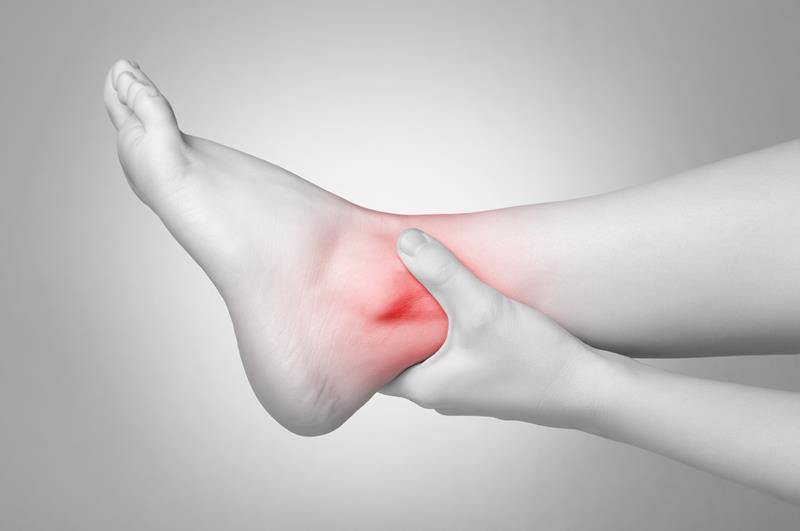- Empty cart.
- Continue Shopping
How to Prevent Ankle Injuries in Women: A Comprehensive Guide

Ankle injuries can be both painful and debilitating, and they are unfortunately common among women. Whether you’re an athlete, a fitness enthusiast, or simply leading an active lifestyle, understanding how to prevent ankle injuries is crucial for maintaining your mobility and overall well-being.
Understanding Ankle Injuries
1. Common Types of Ankle Injuries
Before diving into prevention strategies, it’s essential to recognize the most prevalent types of ankle injuries:
- Sprained Ankles: Occur when the ligaments that support the ankle are stretched or torn, often due to sudden twisting or rolling of the foot.
- Achilles Tendinitis: Inflammation of the Achilles tendon, which connects the calf muscles to the heel bone.
- Stress Fractures: Small cracks in the bones of the ankle, typically resulting from repetitive impact or overuse.
- Plantar Fasciitis: Inflammation of the tissue that runs along the bottom of the foot, often causing heel pain.
2. Risk Factors for Ankle Injuries in Women
Women are more susceptible to ankle injuries due to several factors:
- Anatomy: Women generally have wider hips, which can lead to a greater angle between the thigh bone and shin bone. This increased “Q-angle” can affect the alignment of the knee and ankle joints, potentially increasing the risk of injury.
- Hormonal Changes: Hormonal fluctuations during the menstrual cycle can impact ligament laxity, making the ankle joints less stable.
- Footwear: Wearing high heels or ill-fitting shoes can alter gait patterns and contribute to ankle injuries.
- Physical Activity: Women who participate in sports or physical activities that involve jumping, cutting, or sudden changes in direction may be at a higher risk.
Preventing Ankle Injuries: Tips for Women
3. Strengthening Exercises
Building strength and stability in the muscles surrounding the ankle joint is crucial for injury prevention. Incorporate exercises like calf raises, ankle circles, and resistance band exercises into your routine to improve ankle strength and flexibility.
4. Balancing and Proprioception Training
Balance and proprioception exercises can enhance your body’s awareness of joint position, reducing the risk of rolling or twisting your ankle. Stand on one foot, use a balance board, or try yoga and Pilates to improve balance.
5. Proper Warm-Up and Stretching
Before engaging in any physical activity, warm up with dynamic stretches to prepare your muscles and ligaments. Focus on calf, Achilles tendon, and ankle stretches to increase flexibility.
6. Choose Appropriate Footwear
Opt for footwear that provides adequate support and stability for your chosen activity. Avoid high heels for extended periods and choose athletic shoes that fit properly and offer good arch support.
7. Bracing and Taping
Consider using ankle braces or taping techniques for added support during high-risk activities. Consult with a healthcare professional or physical therapist to determine the best method for your needs.
8. Gradual Progression
If you’re starting a new exercise or sport, ease into it gradually. Sudden increases in intensity or frequency can stress your ankles and lead to injuries. Follow a well-structured training plan.
9. Maintain a Healthy Weight
Excess weight can put additional stress on your ankles. Maintaining a healthy weight through a balanced diet and regular exercise can reduce the strain on your ankle joints.
10. Rest and Recovery
Listen to your body and allow time for adequate rest and recovery between workouts or activities. Overtraining can lead to fatigue and increased injury risk.
11. Consult a Specialist
If you have a history of ankle injuries or ongoing ankle pain, consult with a sports medicine specialist or physical therapist. They can assess your condition and provide personalized recommendations.
12. Use Proper Technique
In sports and physical activities, practice proper technique to reduce the risk of awkward movements that could lead to ankle injuries. Enlist the help of a coach or instructor for guidance.
13. Stay Hydrated
Dehydration can affect muscle function and coordination, potentially increasing the risk of accidents and injuries. Drink plenty of water before, during, and after physical activity.
14. Listen to Your Body
If you experience pain or discomfort in your ankles, don’t ignore it. Rest, ice, and elevate the affected ankle as needed. If the pain persists, seek medical attention promptly.
In Conclusion, Preventing ankle injuries is a crucial aspect of maintaining an active and healthy lifestyle for women. By understanding the risk factors, incorporating strength and balance exercises, wearing appropriate footwear, and taking steps to care for your ankle health, you can significantly reduce the likelihood of suffering from painful and potentially long-lasting ankle injuries. Prioritizing ankle injury prevention will not only keep you moving but also contribute to your overall well-being and quality of life. Remember, a proactive approach to ankle health is a step in the right direction.








